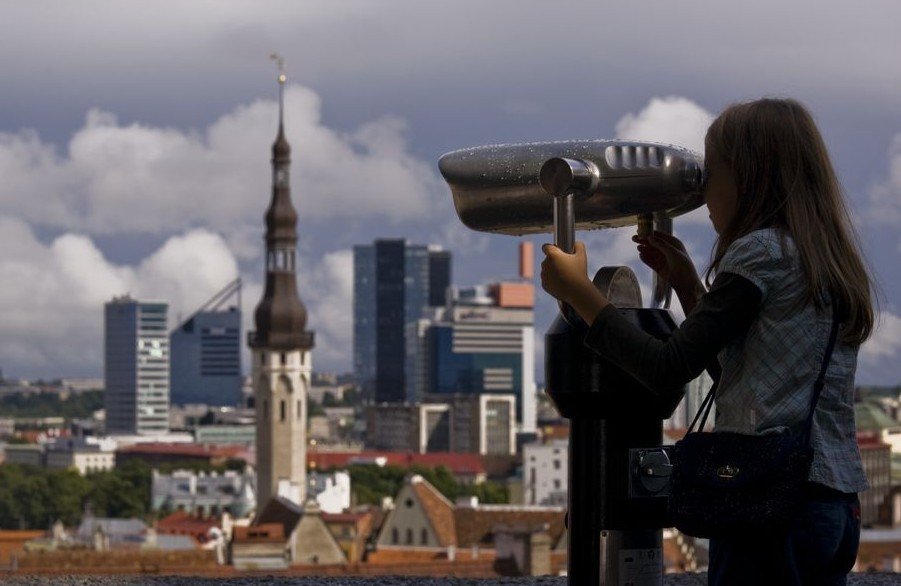Economic growth of 3 per cent in the eurozone? It sounds like a statistical error at a time when the common currency area is braced for a 0.4 per cent drop. But Estonia is set to record a 3 per cent expansion in 2012, nearly double the government’s forecast at the start of the year. And officials expect another 3 per cent in 2013.
By Stefan Wagstyl
Much of this is a rebound from the extra-severe shock that passed through Estonia and the other two Baltic states of Latvia and Lithuania in 2009 when Estonian GDP dropped by a cumulative 18 per cent. Three years of growth have generated a combined recovery of 15 per cent, but Estonia’s output is still around 3 per cent below pre-crisis levels.
Lithuania is in a similar position. In Latvia, where the crisis was the most dramatic with cumulative GDP drop of 20 per cent, even a fast recovery still leaves GDP around 10 per cent down on pre-crisis levels.
All three countries responded to the crisis by drastic austerity packages, including public pay and pension cuts and all saw their property markets sink as pre-2008 credit-fuelled booms collapsed in mountains of corporate and household debt.
Recovery has been driven by sharp increases in exports in which benefited from the resilience of much bigger economies in the region, including Germany, Scandinavia and Russia. In Estonia, for example, Sweden’s Ericsson boosted output of export-oriented mobile phone equipment at the crucial time.
But the credit boom and bust has left a serious burden. In Estonia, private debt as a percentage of GDP soared from below 100 per cent to a peak of nearly 170 per cent in 2010 before falling back to 140 per cent. This is bigger even than in Latvia, where private sector debt peaked at around 150 per cent of GDP.
Much of the debt is tied to property. In Estonia, house prices are some 50 per cent off their peak even after a 20 per cent recovery since the start of 2011.
Where Estonia stands out is in its single-minded aversion to public debt. Even in the depths of the crisis, it allowed itself a maximum annual budget deficit of just 2.9 per cent of GDP in 2008. For 2012 it will be 1.2 per cent, with further reductions next year and a return to surplus in 2014. While public debts across the EU have ballooned, Estonia finished last year with a public debt stock of just 6 per cent of GDP.
Even the fellow Balts, frugal by EU standards, look profligate in Tallinn – in Lithuania, the public debt stock to GDP was at 18 per cent at the end of 2011 and in Latvia, which had to spend public money controlling the worst banking in the region, it was at 38.5 per cent.
Paul Krugman, the Nobel prize-winning US economist who argues against fighting the economic crisis with fiscal cuts, attacked Estonia’s approach this summer. In a blog called Estonian Rhapsody, he criticised “the poster-child of austerity defenders”.
He got more than he bargained for. Estonian president Toomas Hendrik Ilves hit back with tweets that condemned Krugman’s comments as “smug, overbearing and patronising”. The exchange was picked up around the globe – and Estonia’s unusual approach to the crisis secured even more publicity.
Krugman is wrong to say, as he did, that Estonians are “far poorer” than before the crisis. Not only is GDP set to return to pre-crisis levels in the next year or so, this growth looks far more sustainable than the credit-fuelled pre-crisis binge.
As Meelis Kitsing, director of the economic analysis division at the ministry of economic affairs and communications, says: “We are better off than we were in 2005.” Kitsing also argues that as a small open economy with limited access to international debt markets, Estonia could not borrow like the US did, even it wanted to.
Moreover, most Estonians back their government’s programme. Prime minister Andrus Ansip last year won a third term in office at the head of a centre-right coalition. Parties calling for big increases in public spending made little headway. The central government and local authorities do intend to boost investment – for example, in infrastructure – to make full use of EU funds, which usually require co-investors.
But this is a pragmatic response to circumstances, not a policy shift. Krugman or no Krugman, the Estonians are sticking with austerity.
I

